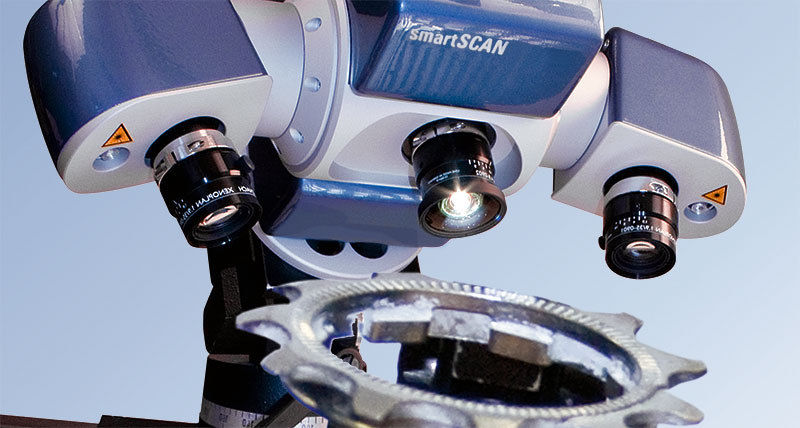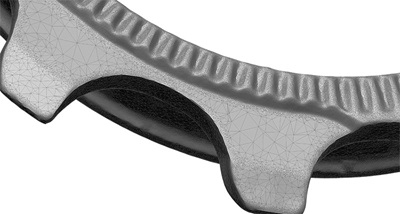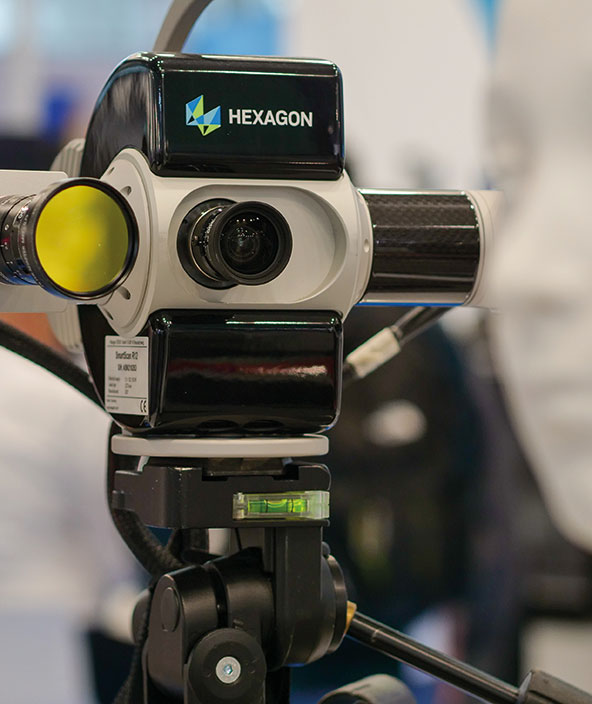Reverse engineering "Down to the teeth"
Contact us

Precise sprocket teeth for the best possible conversion of muscle power into motion speed: a perfectly produced gear cassette thanks to reverse engineering really gets two-wheel products rolling!
From the different sized sprockets of a gear cassette all the way up to their accurate three-dimensional models is only a short, but even more so, a very precise measuring process: regardless of size or shape of the original, the true-to-detail data capture of any complex object geometries and free-form areas is accomplished in a matter of a few seconds. Upon completion of the image acquisition, the generated 3D data is exported to the reverse engineering software and reversed into a CAD model. The CAD data resulting from the reverse engineering process can then for instance be used for purposes such as serial production, reference analysis or quality inspection.

Reverse Engineering of complex geometries
From the very first velocipedes without pedals up to the advanced bicycle models of the present time, quite a number of development stages have taken place. Nowadays, not only professionals call for high-performance components made of long-lasting, durable material. Also in the recreational sports sector, optimum technical conversion of muscle power into speed is sought after.
Impeccably manufactured sprockets are an essential prerequisite for a perfectly functioning gear cassette, which is assembled of a number of individual sprockets in various sizes. The material used to make these components is steel or titanium, whereas in particular the production of titanium gear rims entails rather high material costs. Also, the milling process of titanium presents a particularly difficult manufacturing part. When processing this precious material, it is therefore even more crucial that the final product is of prime quality and produced with economic material input in mind.
 This application report describes the method of the reverse engineering by example of a bicycle sprocket. This particular component is characterized by a complex geometry with shaded areas and numerous edges which for conventional digitization scanners are particularly difficult to cope with when it comes to their data acquisition.
This application report describes the method of the reverse engineering by example of a bicycle sprocket. This particular component is characterized by a complex geometry with shaded areas and numerous edges which for conventional digitization scanners are particularly difficult to cope with when it comes to their data acquisition.
The digitization project consists of two main stages: in the first step, the bicycle sprocket is captured three-dimensionally with the help of the SmartScan system. In the second step, a surface model is generated by using the reverse engineering software Rapidform XOR3. This virtual replica (CAD data set) is delivered as the final product.
In order for older bicycle sprockets, of which respective construction data does not yet exist, being able to serve as templates for the production of spare parts, each individual component is three-dimensionally scanned with the help of a AICON SmartScan system.
The resulting highly precise 3D data is then available for the subsequent reverse engineering process and the CAD data set generated from this process serves as a basis for the serial production as well as for further product development.

Automated precise digitization
The data acquisition of the component is carried out with the help of a turntable, enabling a virtually entirely automated digitization of the measuring object. Occasional areas which have not been accounted for in the digitization phase are subsequently filled in with additional exposures. Upon the complete capture of the object, a 3D data set (polygon mesh) is evaluated, which is then exported to the reverse engineering software Rapidform XOR3.
In order to perform the reverse engineering and to generate a complete CAD data set, the three-dimensional model of the bicycle sprocket is taken from the scanning process. To verify the reverse engineering result, the 3D model (polygon mesh) and the reverse engineered data set (CAD model) are compared against each other within a split second and any deviations against the template are visualized by means of false color mapping.
For the purpose of serial production, these comparisons can also be automated, followed by a deviations log, issued for instance in a PDF format. Subsequently, the parametrical construction data is edited through a CAM process for the milling work. Thanks to the possibility of the highly accurate digitization, older sprocket models can be precisely represented as three-dimensional data models and prepared for the subsequent production.

Efficiently manufactured premium products
Even despite processing large data volumes, the automated digitization approach ensures an efficient workflow at all times. The AICON SmartScan allows for the easy and fast interpretation of the measuring results, enabling the user to draw from an extensive and comprehensive data base for further processing, whereby, thanks to reverse engineering, not only efficient material utilization in the production is ensured, but also a premium quality bicycle sprocket as the final result is guaranteed.
Furthermore, the produced data can be used for studies of material wear and deterioration by comparing data of used sprockets with those of newly produced ones. This type of information then serves as a basis to improve or further develop the product – and in doing so, to win a new stage on the long path to producing the perfect bicycle component.
